Latest Posts by copperfingertips - Page 2
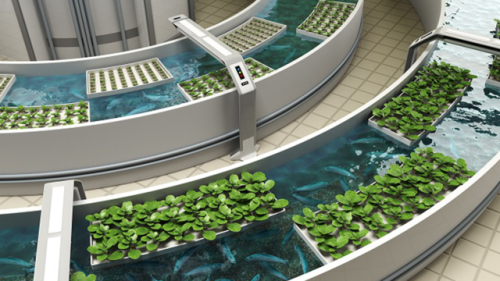
adult: what do you want to be when you grow up?
me: an old lady with a garden, soulmate, tons of animals, & a peaceful forest home
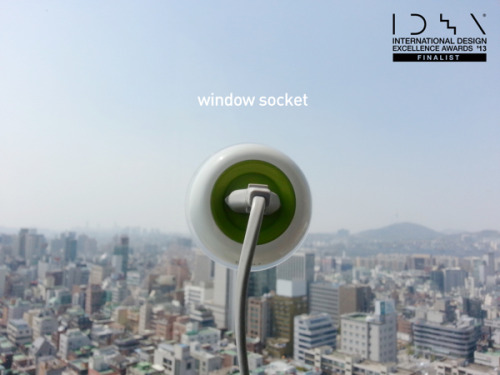

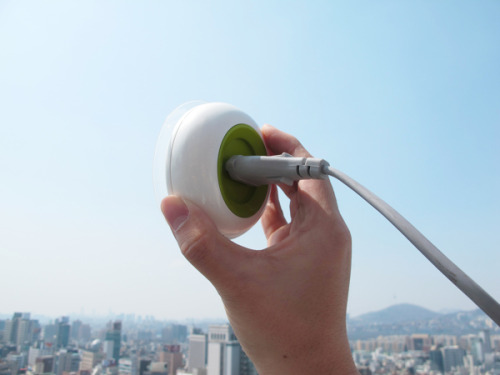
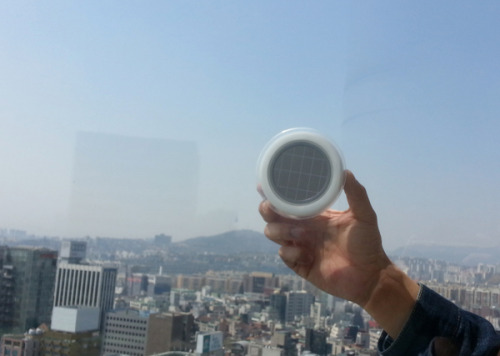
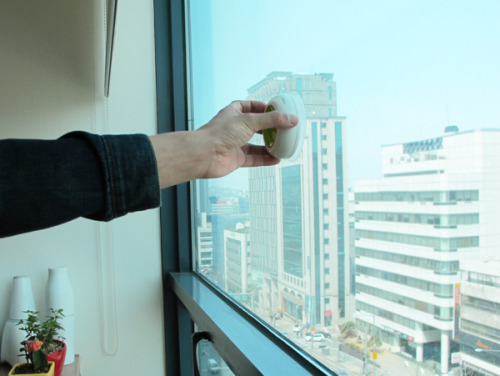


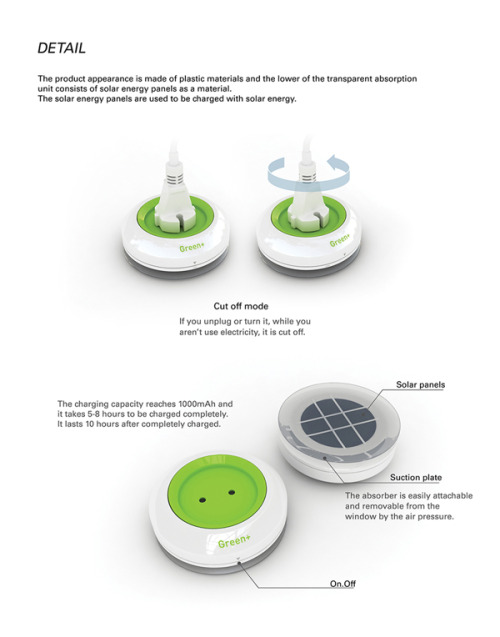


Plug It On The Window
The Window Socket offers a neat way to harness solar energy and use it as a plug socket. So far we have seen solutions that act as a solar battery backup, but none as a direct plug-in. Simple in design, the plug just attaches to any window and does its job intuitively.
Designers: Kyuho Song & Boa Oh

Make Your Own Sun Jars
Personally, I’d try and find warm white LED lights to use in this. It just fits the aesthetic better, I think.
Solarpunk Activities for the Socially Anxious
- Read up on the philosophical background(s) of solarpunk. I’ve got a bibliography page if you are looking for more. - Figure out which plants that are indigenous or endangered in your area. Read about their history (and if you can make seed bombs.) - Enjoy Alan Watts lecture on nature - Make a herb drying rack by using string and push pins. You can eat, burn or drink tea from the herbs. - Consider growing food from your scraps - Watch a Ted Talk on Conservation - Draw nature, real or imaginary. Take time to map out fantasy lands. (Think about it as an environmental vision board) - Consider if composting might be right for you - If you have houseplants, learn how to propagate them (or even just take the time to learn more about them…their history, and how best to care for them). If you do want to learn how to propagate, I suggest starting with succulents. They are hardy, fun, and fairly cheap. -Learn how to Talk to Trees with Charis Melina Brown - A National Geographic explainer on how trees talk to each other. - Listen to this amazing, free, nature meditation with Jessica Snow
Not Herbalism but Baker Creek Heirloom Seeds just put out their 2019 Catalog. It’s time to plan gardens now, so that when spring comes, you can execute that plan. I have lived in apartments with very little space for the past 7 years, so I thought I’d share my “grows well in containers list” with you guys.
Greens: Most greens, spinach, arugula, lettuces, some cabbages, etc. will grow in a container quite well.
Herbs: Similar to above, you can get your typical herbs to grow in pots quite well, usually. The yield with herbs is always very good too.
Anything with “Tom Thumb” or “Dwarf” in front of it: These are varieties made for containers, basically. They’re very, very small. There’s peas, corn (as in pop corn), tomatoes. Lots of stuff. Even flowers.
Cheery Tomatoes: In general, with any “regular” veg, you’ll probably need a larger pot (Think like 1 gal). If you’re willing to go the distance, though, cherry tomatoes are a great container plant, in my opinion.
Alpine Strawberries: Again, somewhat larger (though not as large as above) is recommended to get more berries. These guys are tiny strawberries. Like one bite berries.
Banana Peppers: I had two plants. They went wild. I ended up with several fresh peppers mixed into stir fry all summer and then two large canned jars of them, which I munched on through fall to the very very beginning of winter.
Carrots: Actually, if you’ve got a tall enough pot, you can grow regular carrots. But I like the Parisienne or other little round globe varieties.
Radishes: Similar concept to the carrots. Small, round. Remember to eat your radish and carrot greens as well.
Green onions: Either a chive situation or, some companies do actually have very small, like golf ball sized onions.
Look for “container mixes” on seed sites: Quite a few seed sights often put together container seed mixes. They’re usually the varieties recommended by the company.
So that’s my list. Remember, grow what you want to eat. Also, a good plan is grow what is hard for you to buy. That way you aren’t doubling down on what you can easily find in town.

Artist Lucile Prache




Volunteering at my local urban farm — they have baby goats!!!!
Nature

“my favorite thing about you is your smell
you smell like
earth
herbs
gardens
a little more
human than the rest of us”
- rupi kaur, milk and honey



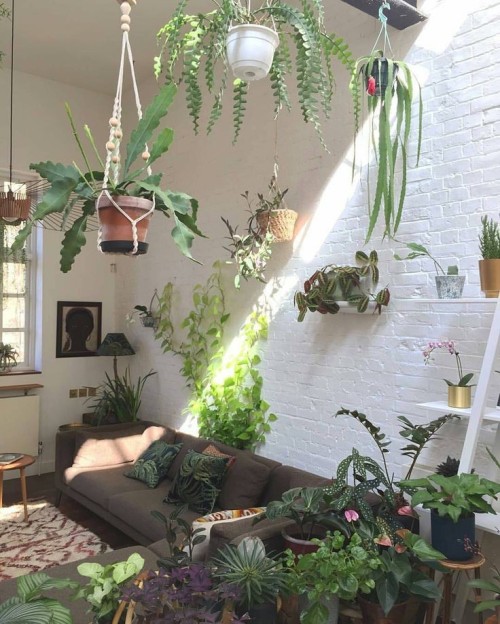
A thing I really like about the cottagecore/farmcore/grandmacore community, is the way simple things are romanticized. It’s a break from a culture centered around consuming, and inspires slow living and appreciation for your natural surroundings and simple joys.
To find meaning and happines in tending to your tomatoes, making jam from your grandmother’s recipe, or taking a nap in the sun is such a beautiful thing to me. There is such a feeling of luxury to be able to share a homemade cake with the people you care about, or to be able to give away some of your carrots to your neighbour, it really makes a little feel like a lot!

“Solarpunk can see the spots where trees have broken through the asphalt for what they are: great places to grow trees.”
— Andrew Dana Hudson, from a forthcoming essay on solarpunk politics (via solarpunks)



Meet the Women Behind California’s First Open-Water Seaweed Farm
They’re on a quest for a delicious solution to global food insecurity
Tessa Emmer, Catherine O’Hare, and Avery Resor constitute the all-female braintrust behind Salt Point Seaweed, a fledgling Bay Area company that launched last June. They’ve been harvesting wild seaweed off the coast of Mendocino County, located a few hours north of San Francisco, for two years and selling it to chefs at local restaurants, seafood CSAs, and at retail. Now, they’re striving to become the first West Coast seaweed farming operation to establish an active, open-water farm.
The idea to launch a sustainable seaweed syndicate came to Emmer, O’Hare, and Resor after living in East Africa and witnessing the burgeoning role of seaweed in those communities—as local fishing stock dwindled, resourceful women had found a reliable replacement in seaweed. Seaweed grows rapidly and easily without help from external inputs. Emmer and Resor, who share a background in natural resource management, drew inspiration from a hardscrabble female aquafarming operation in Zanzibar. “There were so many women farmers using it as an alternative revenue model in declining fisheries environments,” says Emmer. “We started wondering why it wasn’t happening in California.”
(via Meet the Women Behind California’s First Open-Water Seaweed Farm | Sierra Club)

Salt Point Seaweed is a three-woman team - Tessa Emmer, Catherine O'Hare, and Avery Resor - living in the Bay Area and working throughout California.
Tessa and Catherine met as undergraduates at Oberlin College and have spent many days exploring the Pacific Ocean from Oahu, Hawaii, to Mendocino, California. Tessa fell in love with the coastal and riparian ecosystems of the Pacific coast when she came out to California for a restoration internship with the Presidio of San Francisco. Her drive to work at the intersection of ecological conservation, economic development, and climate adaptation led her to pursue a master in sustainable development at UC Berkeley, where she met Avery.
Catherine has a background in coastal ecology and sustainable agriculture. She grew up next to the ocean, splashing around the sunny tide pools of southern California. After graduating with a Biology degree from Oberlin College, she worked for small scale organic farms and a small food business, solidifying her passion for local food, regenerative food systems, and health.
Avery grew up living and working on a cattle ranch and has been working in sustainable agriculture ever since. At Duke University Marine Lab, she studied marine biology and environmental science and was captivated by the parallels between aquaculture and land-based agriculture. She is integrating her agriculture experience with 10 years of professional cooking experience to bring farm-to-table culinary expertise to our team.
Avery, Catherine, and Tessa are all committed to using business as a force for environmental protection, community development, and food system transformation.
https://www.saltpointseaweed.com/about
You can find out more / follow them on instagram here: https://www.instagram.com/saltpointseaweed/
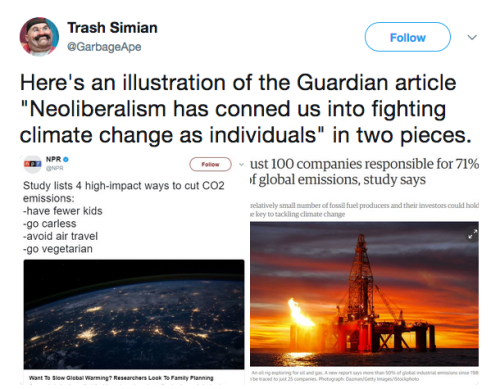


How anarchist organizers in rural Puerto Rico rebooted their power grid after the privatized power company abandoned them

After being hammered by hurricane Maria, the residents of the rural Puerto Rican mountain town of Mariana got tired of waiting for the bumbling, privatized, cash-starved power authority to reconnect them to the grid, so the anarchist organizer Christine Nieves founded Proyecto de Apoyo Mutuo, one of a dozen-odd cooperatives across the island to create their own solar grid; by the time the The Puerto Rico Electric Power Authority finally put in appearance, Mariana had had power for two whole months.
After Maria, Puerto Rico suffered the second-longest blackout in world history, ignored by both the federal government and the gutted, heavily privatized local government. So community organizers like Nieves took matters into their own hands.
Nieves’s group formed an alliance with the Katrina-inspired Mutual Aid Disaster Relief, which fundraised to send gear to Puerto Rico.
The island-wide efforts are rare bright spots in a year-long crisis with no end in sight. Naturally, they’ve faced police harassment and raids looking for “antifa.”
https://boingboing.net/2018/09/13/better-than-bounty.html

After Planting a Tree Every Day for 40 Years, Man Has Created Blossoming Forest on Barren Wasteland
Humans delayed the onset of the Sahara desert by 500 years

Humans did not accelerate the decline of the ‘Green Sahara’ and may have managed to hold back the onset of the Sahara desert by around 500 years, according to new research led by UCL.
The study by a team of geographers and archaeologists from UCL and King’s College London, published in Nature Communications, suggests that early pastoralists in North Africa combined detailed knowledge of the environment with newly domesticated species to deal with the long-term drying trend.
It is thought that early pastoralists in North Africa developed intricate ways to efficiently manage sparse vegetation and relatively dry and low fertility soils.
Dr. Chris Brierley (UCL Geography), lead author, said: “The possibility that humans could have had a stabilizing influence on the environment has significant implications. We contest the common narrative that past human-environment interactions must always be one of over-exploitation and degradation. Read more.
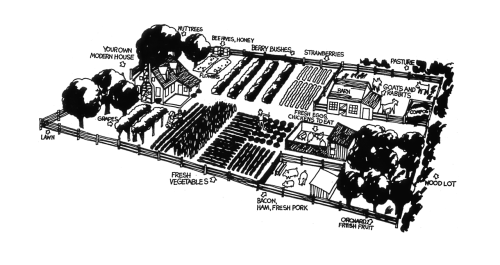
Self Sufficiency, 1970s

Six talking points to use when debunking the myth that overpopulation is the root of the environmental crisis:
1. Rates of population growth are declining: Between 1950 and 2000, the world population grew at a rate of 1.76%. However, between 2000 and 2050, the rate of growth is expected to decline to 0.77%.
2. Overpopulation is defined by numbers of people, not their behaviors: Industrialized countries, who make up only 20% of the world’s population, are responsible for 80% of the carbon dioxide build-up in the atmosphere. The United States is the worst offender, with 20 tons of carbon emission per person. Therefore, it is not the amount of people that leads to degradation, but what they are doing. Permaculture design illustrates how humans can have a positive impact on the health of our ecosystems, bringing greater health and equity.
3. Overpopulation justifies the scapegoating and human rights violations of poor people, women, people of color, and immigrant communities: Often times the subtext of “too many people” translates to too many poor people, people of color, and immigrants. This idea has been used to justify such practices as the forced sterilization of 35% of women of childbearing age in 1970′s Puerto Rico, under the control of and with funding from the US government. This is a human and reproductive rights violation.
4. Overpopulation points the finger at individuals, not systems: This lets the real culprits off the hook. When we look at the true causes of environmental destruction and poverty, it is often social, political and economic systems, not individuals. We see militaries and the toxic legacy of war, corrupt governments, and a capitalist economic system that puts profit over people and the environment.
5. Supports a degenerative mental model of scarcity: Much of this ideology was created by Thomas Robert Malthus, an 19th century English scholar. Malthus gave us the erroneous idea that the reason there is famine is because there are too many mouths to feed. This hides the reality that we have a distribution problem, not a scarcity problem. Malthus’s work has been used as the philosophical bedrock to justify many human rights violations throughout history.
6. Focusing on overpopulation prevents us from creating effective solutions and building movements for collective self determination: Permaculture teaches us that how we define a problem determines how we design solutions. How does viewing overpopulation as a root problem impact the way we think of and design solutions? What would solutions look like if we viewed people, all people, as an asset? The myth of overpopulation has lead to solutions of population control and fertility treatments, rather than overall health care and women’s rights. The more we blame humans and think we are bad and evil, the harder it is to believe in ourselves, count on each other, and build a collective movement for justice and self determination.
A lot of people are really scared and angry because of the results of the newest climate change reports — as they should be. But I’m already seeing a lot of posts and news reports like “HERE’S WHAT YOU CAN DO TO FIGHT GLOBAL WARMING” and bizarrely enough, the answers are never like “weed out climate change deniers from your government, impose strict new rules for the corporations that are creating most of the emissions, pour government resources into alternate forms of fuel, etc.” It’s always like “carpool to work!”
Look. Of course you should be working to reduce waste in your own life. But let’s not fucking pretend that consumers are the ones who made this mess. You know what another recent study found? Just 100 companies are responsible for 71% of global emissions. If the rest of us stopped ALL WASTE and fucking ascended to a higher plane of existence that no longer requires consumption of any kind, the world would still be absolutely fucked if those 100 companies keep on as they do.
I hate this personal responsibility model when it comes to conservation. By ignoring the actual source of the problem and focusing on individuals instead, guess who gets targeted? The absolute most vulnerable individuals on the planet. When people advocate personal responsibility, somehow they’re never talking about billionaires and their private jets. They’re creating straw bans that will make life more dangerous for people with disabilities. They’re shaming women for using disposable menstrual products. They’re criticizing the poor and destitute for using “wasteful” products because they’re all they can afford. They’re making vaguely eugenic statements about getting people in “third world countries” to stop ~breeding~ so much. It’s monstrous.
Stop shaming consumers for the sins of corporations and their powerful investors. Stop placing the blame at the feet of the people who already have the hardest time getting through life. Do something, and by “do something” I mean buy a reusable coffee cup on the way to fucking vote. Go to a protest. Call a representative. Demand accountability from the people who got us into this mess.
Solarpunk stuff for really broke people
Hey! I’m excited about sustainability, but I’m really poor! So here are some tips if you are also poor.
Some starter tips
There are some things you can take that, while not stealing, people won’t expect you to take. This includes seed collecting from untended gardens, portions of plants that grow in the wild, and soil from parks. This kind of stuff can cut down on expenses.
Seeds can be sold in expensive stores, but can also be taken from produce you buy. Stuff like garlic, onions, green onions, tomatoes, and potatoes are all really easy to reproduce by themselves. Care enough to want organic, heirloom, ect? Go to a farmers market, take the seeds.
Some places also do seed libraries or seed swaps. Keep an eye out for these, especially if you live in or near a big town. Dollar tree also sells seeds in the spring.
A lot of this might involve bending rules. Be sneaky and be careful.
Plants
Ideally, land to plant on in a garden is how food is produced. However if you’re like me you live in a cramped, overpriced studio on the second floor or something.
Yeah containers work. But you need soil for that, and you can’t grab all of it from potting soil bags ripped open at your local garden store. Maybe if you’re patient. But I’m not.
Hydroponic setups work better. One like this requires a plastic bottle, some kind of mesh, and fertilizer.
Fertilizer is, in a lot of places, seen as a bright blue powder sold in gardening stores. You could buy that. I wouldn’t personally. You could steal it from a chain store. But more likely, you could make your own. This article talks about fertilizer from food and food waste. And you can learn about nutritional needs of plants here.
This method could grow herbs, leafy greens, and some vine plants like pole beans, with support. this is not recommended for root plants like potatoes, for a lot of reasons.
Of course if you have access to dirt (not necessarily potting soil) you’re in a better place. Do a few tests, like drainage and composition. PH shouldn’t be a huge deal if you’re digging it up, just find dirt that shit is already growing in. Find a container that can hold a lot of dirt, poke a few good sized holes for water drainage, and plant that shit!
If you manage to bring some of your shit past usable to seed, congrats! Maybe learning about seed collection would help you spread the love to your other friends.
Oh and since there are no bees in your apartment (I hope) you’re gonna need to hand pollinate fruiting plants.
Recycling and reusing
Perhaps the most efficient way of doing this is having friends who also reuse things. You’re not gonna be able to save every candy wrapper most days, and I’m in no position to give up simple luxuries like candy. If you got the money, finding local producers who use compostable/recyclable materials for your little luxuries is nice though. But some of us ain’t got that kinda money. And that’s ok.
As I said before, bottles can be used to make hydroponic gardens. Maybe if you want you can help your friends set up some gardens if you got one too many two liters from Little Caesars.
Plastic bags can be turned into plarn (plastic yarn) and used to knit or crochet. If you feel so inclined you can learn to make cool shit, like reusable shopping bags or something. You could also make a bunch of plarn and outsource this to your friend who likes to knit in exchange for something you wanna do, or are good at.
Egg cartons can be used as seed starters. If you use the cardboard kind, they’ll dissolve into the soil if you break em down a little before planting them.
Aluminum foil can be used to keep algae out of your hydroponic garden, or as an alternative to steel wool.
There’s a lot that I could say, but reuse stuff is popular right now. Ideally, it should be reused into something that has a good use. And remember, sharing your talents and outsourcing things you can’t do is good and pure.
Green Power
This is gonna be a little more expensive. If you got a little money laying around, this could help reduce your power bill or something. But this isn’t gonna be free or next to free.
Phone chargers are an easy one to power. They charge up and don’t vary in their power needs.
This tutorial is, quite frankly, brilliant, and takes away a lot of the barriers to making solar powered stuff (like soldering). They tear apart a garden light to do this. That light could be used for some plants or something.
Wind and hydro are kinda unrealistic for an apartment, but it’s something people do.
Local resources
Food banks, community gardens, borrowing land, pooling resources. Buy an empty plot with your friends and start a community garden.
Tiny Houses in Urban Context
I’ve seen a lot of really great tiny home designs, and I’ve seen a lot of love from other people for those designs as well. They combine a small space, perfect for one or two people, that usually only apartment buildings design for, with the benefits of having a detached home, with a yard, and windows on all sides for more natural light.
What I don’t see is a whole lot of context, least of all in an urban neighborhood environment. These houses are often pictured in an open grassy, or forested space, which is nice for some people I’m sure, but there are lots of people who would prefer to live in a city, in pedestrian and transit friendly areas, rather than in the middle of nowhere, where you’d have to use a car to get everywhere.
There already exists an urban context for tiny homes, but due to restrictive zoning, it’s not commonplace in most cities in the U.S.
They’re called Bungalow Courts, or sometimes Cottage Courts, and basically it’s where you take two adjacent lots, and rather than having one large single-family-house per lot, you have around 3 or so tiny houses per lot, all facing a shared space in the center.

All this takes up the same space as two city lots, which are usually zoned to only allow one house per lot. But not everyone wants, or can afford a large house, so Bungalow Courts would be a perfect fit in a lot of neighborhoods that currently lack a lot of housing diversity for a range of wants and needs.



Anyway, I just thought I’d share, because I think this a really neat concept that should be allowed more places. I’d think I’d like to live in a Bungalow Court; I like the idea of having a house to myself, but I don’t need much space, and I don’t want a huge yard to maintain.
In order to make this legal to build out, zoning would need to be changed to allow 3-4 units of housing to be built on lots currently restricted to only 1 unit of housing. A big contributing factor to rising housing costs has been the over-favoring of single-family houses on large lots since the end of WWII, so not enough units of housing are being built in many cities to keep up with demand.
Legalizing more “missing middle housing” like Bungalow Courts in single-family-house-neighborhoods would help cities incrementally keep up with demand, in a way that fits nicely into existing neighborhoods.

Fun fact, hammering metal spikes into tree trunks is a federal crime in the US because environmental activists used to do it in the 80s to fuck up chainsaws and logging equipment.
A massive spinning ring could store our excess energy